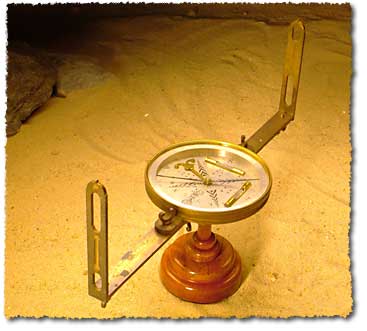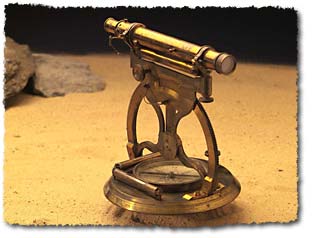Measuring angles
A number of instruments were used over time to measure angles for surveys.

Circumferentor compass circa 1840
Circumferentor
Early Queensland surveyors used a circumferentor, or large compass, to define their direction, putting the survey on a magnetic meridian. This instrument was very suitable for working in the heavily timbered areas of the Australian bush.
The magnetic needle of the circumferentor was susceptible to local attractions. Therefore the surveys using this instrument were not very accurate.

Theodolite compass circa 1860
Theodolite
By the 1860s, circumferentors were being replaced by theodolites with inbuilt compasses and were known as compass theodolites. These were used to read the angles on a survey and increased the accuracy whilst maintaining a magnetic datum.
By the 1880s, the surveyor used the theodolite to read angles and to take astronomical observations on the sun or stars. This put the survey on an astronomical meridian.
Related links
- Learn about Queensland’s surveying history.
- View images of instruments and equipment used to survey and map Queensland.